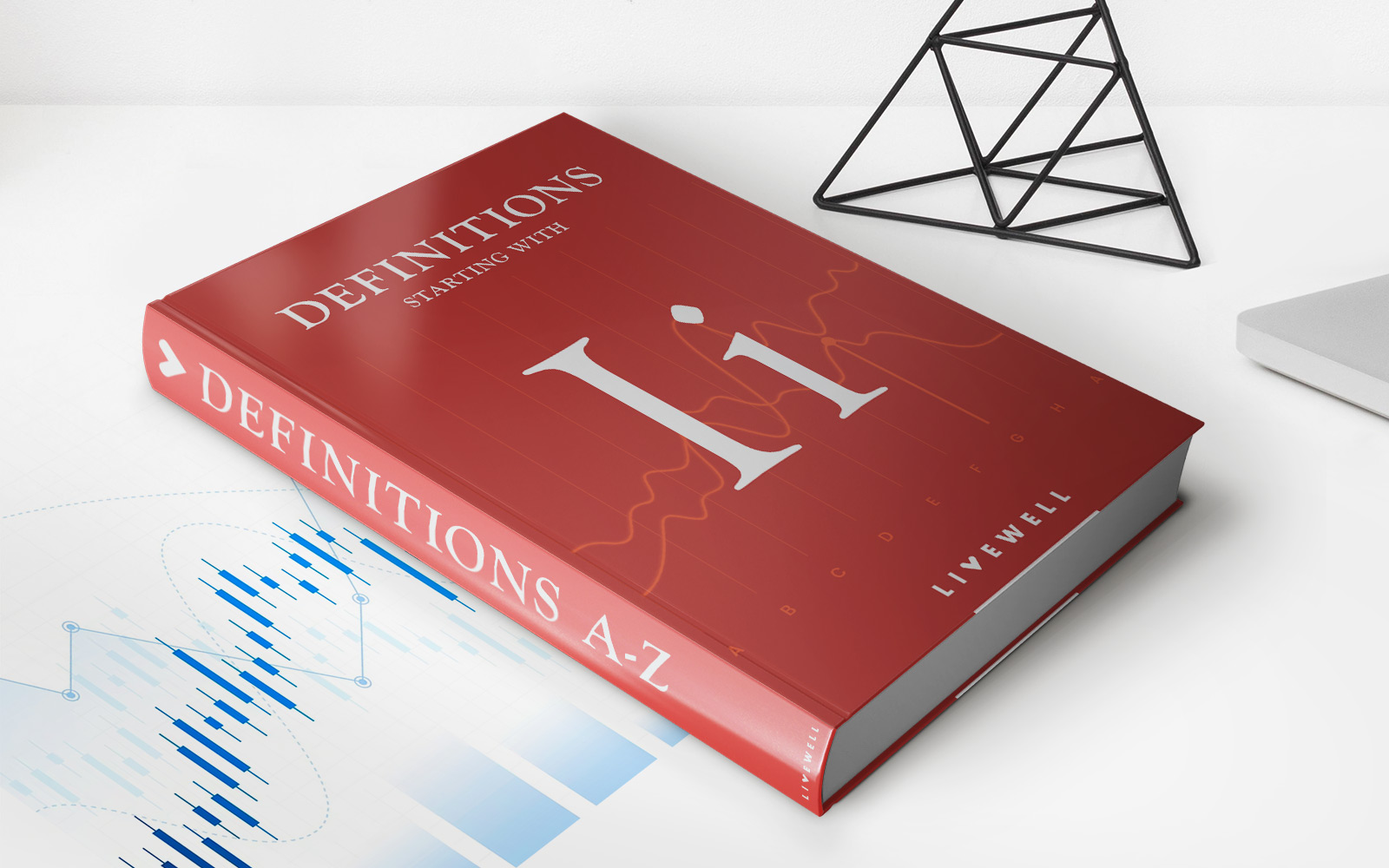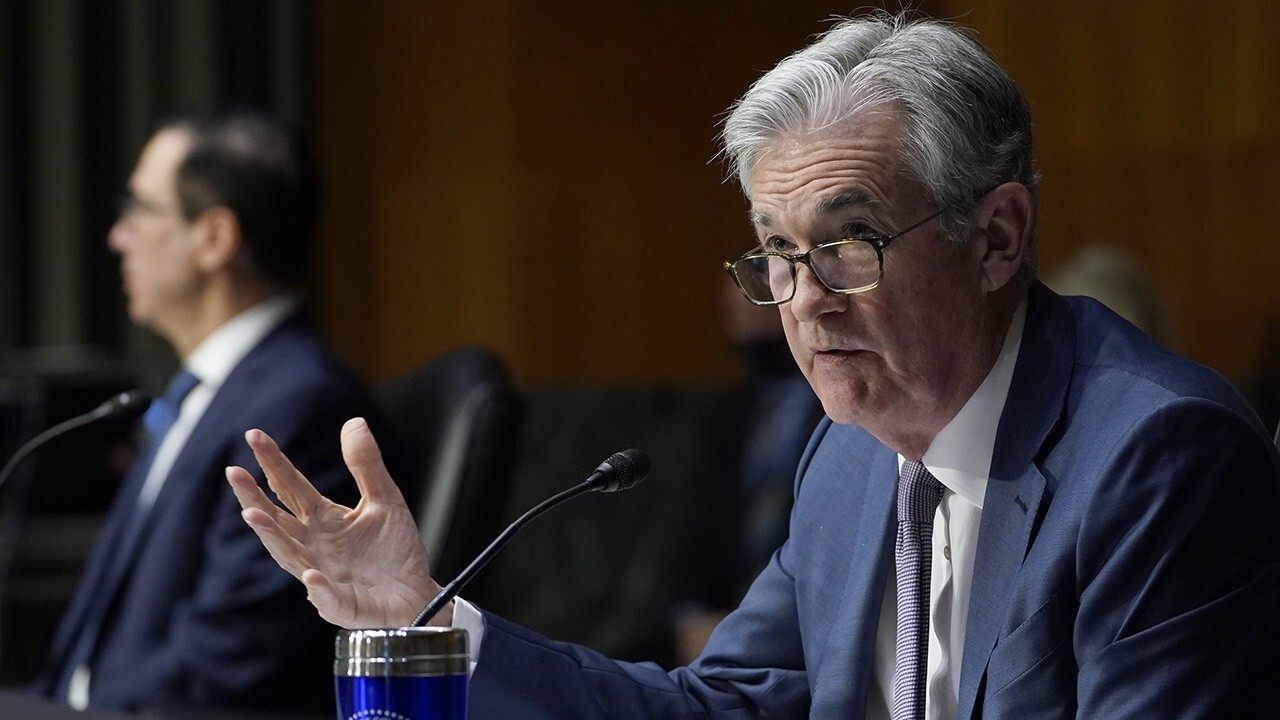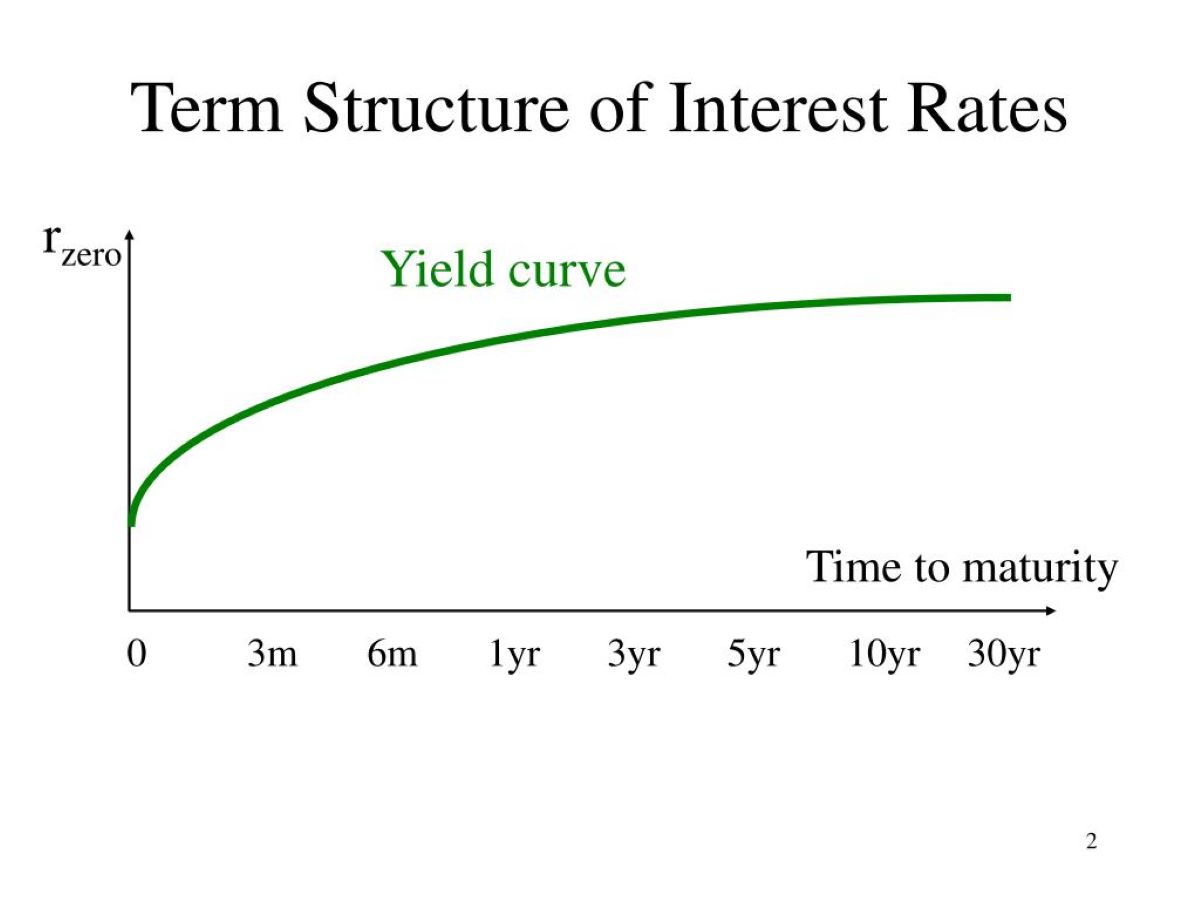

Finance
What Does A Recession Do To Interest Rates?
Published: November 1, 2023
Discover how a recession impacts interest rates in the finance sector. Learn why interest rates may fluctuate during economic downturns and how it affects borrowing and lending.
(Many of the links in this article redirect to a specific reviewed product. Your purchase of these products through affiliate links helps to generate commission for LiveWell, at no extra cost. Learn more)
Table of Contents
- Introduction
- Definition of a Recession
- Relationship Between Recessions and Interest Rates
- Impact of a Recession on Interest Rates
- Historical Examples of Recession and Interest Rate Trends
- The Role of Central Banks in Shaping Interest Rates during a Recession
- Factors Influencing Interest Rates During a Recession
- Conclusion
Introduction
In the world of finance, economic recessions are unavoidable. These periods of economic decline can have far-reaching effects on various aspects of the financial system, including interest rates. Understanding the relationship between recessions and interest rates is crucial for investors, borrowers, and anyone seeking to navigate the complex landscape of finance.
During a recession, the overall economic activity slows down, leading to reduced spending, decreased production, and rising unemployment. As businesses struggle and consumers tighten their belts, the demand for loans often decreases. This decrease in loan demand can have a significant impact on interest rates.
The relationship between recessions and interest rates is complex and multifaceted. In normal economic conditions, interest rates are primarily determined by the supply and demand for credit. However, during a recession, several additional factors come into play that further influence interest rates.
This article will delve into the impact of recessions on interest rates, exploring both historical examples and the role of central banks in shaping monetary policy during these challenging economic times. Additionally, we will examine the various factors that can influence interest rates during a recession and provide insights into how borrowers, savers, and investors can navigate the changing interest rate landscape.
So, whether you are a business owner considering taking out a loan, an investor looking for opportunities, or a saver planning for retirement, understanding how recessions affect interest rates is essential. By gaining insights into the relationship between recessions and interest rates, you can make more informed financial decisions and potentially mitigate risks during challenging economic times.
Definition of a Recession
Before we delve into the relationship between recessions and interest rates, let’s first define what a recession is. In simple terms, a recession is a significant and widespread decline in economic activity over a sustained period.
Economists typically define a recession as a period of at least two consecutive quarters, or six months, during which there is a contraction in a country’s gross domestic product (GDP). GDP measures the total value of goods and services produced within a country’s borders, and a decline in GDP indicates a slowdown in economic output.
Recessions are generally characterized by reduced consumer spending, declining business profits, increased unemployment, and a slowdown in the housing market. These factors create a negative feedback loop, as reduced spending leads to lower demand, which in turn affects businesses and employment.
It’s important to note that recessions are a normal part of the economic cycle. They are often caused by various factors such as financial crises, changes in government policies, natural disasters, or global economic downturns. While the severity and duration of recessions can vary, they typically have a significant impact on the overall economy and financial markets.
During a recession, individuals and businesses face numerous challenges. Job losses and reduced income can make it harder for households to meet their financial obligations, while businesses may struggle to stay afloat amidst declining sales and profits.
Government intervention in the form of monetary and fiscal policies is often deployed during recessions to stimulate the economy. Central banks may lower interest rates to encourage borrowing and investment, while governments may implement fiscal stimulus measures such as increased public spending or tax cuts to boost economic activity.
Understanding the definition and characteristics of a recession is fundamental to comprehending its impact on interest rates. In the following sections, we will explore the intricate relationship between recessions and interest rates, shedding light on the mechanisms at play and the implications for borrowers, savers, and investors.
Relationship Between Recessions and Interest Rates
The relationship between recessions and interest rates is complex and intertwined. During a recession, interest rates tend to behave differently compared to times of economic growth. Understanding this relationship is essential for individuals and businesses alike, as it can have a significant impact on borrowing costs, investment decisions, and overall financial planning.
Traditionally, interest rates are influenced by the supply and demand for credit. In a healthy and growing economy, the demand for loans is typically high, driving interest rates upward. Conversely, during a recession, the demand for credit often decreases sharply.
When the economy enters a recession, businesses and consumers become more cautious about taking on new debt. Companies may delay investments, reduce expansion plans, or even cut back on operations, resulting in a decreased demand for loans. This reduced demand for credit puts downward pressure on interest rates.
Furthermore, during a recession, central banks often implement expansionary monetary policies to stimulate economic growth. One of the primary tools at their disposal is lowering interest rates. By reducing interest rates, central banks aim to encourage borrowing and investment, thereby boosting economic activity.
However, the relationship between recessions and interest rates is not always straightforward. In some cases, interest rates may remain low or even decrease further as the economy enters a downturn. This can be a deliberate policy move by central banks to provide additional monetary stimulus in an effort to combat the recession.
On the other hand, there may be instances where interest rates rise during a recession. This can occur if inflationary pressures persist or if the government’s fiscal position deteriorates, leading to higher borrowing costs. Additionally, financial market dynamics and investor sentiment can also influence interest rate movements during a recession.
It’s important to note that the exact relationship between recessions and interest rates can vary based on several factors, such as the severity and duration of the recession, the country’s economic structure, and the actions taken by central banks and governments to mitigate the impact of the recession.
Understanding the dynamics of the relationship between recessions and interest rates is crucial for individuals and businesses looking to make informed financial decisions. By recognizing how interest rates are influenced during economic downturns, borrowers can potentially take advantage of lower borrowing costs, while savers and investors can adjust their strategies to navigate the changing economic landscape.
Impact of a Recession on Interest Rates
A recession can have a profound impact on interest rates, affecting borrowers, savers, and investors alike. The specific impact of a recession on interest rates can vary based on the prevailing economic conditions and the actions taken by central banks and governments in response to the downturn.
One of the primary impacts of a recession on interest rates is the potential for a decrease in borrowing costs. As the economy enters a downturn, the demand for credit typically decreases. This decrease in demand can lead to lower interest rates, as lenders compete for a smaller pool of borrowers.
Lower interest rates can be beneficial for borrowers, as they can reduce the cost of borrowing for various purposes such as mortgages, car loans, or business loans. This can provide some relief to individuals and businesses facing financial challenges during a recession.
Additionally, during a recession, central banks often implement monetary stimulus measures to boost economic activity. One of the tools at their disposal is lowering interest rates. By reducing interest rates, central banks hope to encourage borrowing and investment, stimulating the economy. This deliberate lowering of interest rates can further contribute to the overall decrease in borrowing costs during a recession.
However, decreased borrowing costs during a recession may not always translate into improved access to credit for all borrowers. Financial institutions often become more risk-averse during economic downturns, tightening lending standards and making it more challenging for some borrowers to obtain loans.
On the other side of the equation, a recession can have a negative impact on savers and investors searching for yield. With interest rates declining, savings accounts, certificates of deposit (CDs), and other fixed-income investments may offer lower returns. This can be particularly challenging for individuals relying on interest income for their livelihood.
Investors seeking higher returns may be compelled to take on additional risk by investing in higher-yielding assets such as stocks or corporate bonds. However, it’s important to note that investing in higher-risk assets carries its own set of risks, especially during periods of economic uncertainty.
Moreover, a recession can also impact interest rates indirectly through its effect on inflation expectations. During an economic downturn, demand for goods and services often decreases, leading to lower overall spending. This decrease in demand can put downward pressure on prices, leading to lower inflation rates. Central banks may respond by lowering interest rates to stimulate demand and prevent deflation, further influencing interest rate trends during a recession.
In summary, a recession can have contrasting effects on various stakeholders in the economy. Borrowers may benefit from lower borrowing costs, while savers and investors may face challenges in finding attractive investment opportunities. The precise impact of a recession on interest rates depends on the actions taken by central banks, changes in inflation expectations, and the overall economic landscape. It is crucial for individuals and businesses to closely monitor interest rate trends during a recession and adjust their financial strategies accordingly.
Historical Examples of Recession and Interest Rate Trends
Throughout history, there have been several prominent examples of recessions and the corresponding impact on interest rates. These historical examples provide valuable insights into how interest rates can fluctuate during economic downturns and the measures taken by central banks to address the challenges posed by recessions.
One notable example is the global financial crisis of 2008. The collapse of the housing market in the United States triggered a severe recession that spread globally. As the recession took hold, central banks around the world implemented unprecedented measures to stabilize the financial system and stimulate economic growth. One key aspect of their response was lowering interest rates to historically low levels. In the United States, for instance, the Federal Reserve slashed the federal funds rate close to zero, aiming to encourage borrowing and investment. This aggressive monetary policy stance helped stabilize financial markets and support economic recovery.
Another example is the recession of 2001, commonly known as the dot-com bubble burst. The rapid rise and subsequent collapse of technology stocks led to a significant economic downturn. In response, the Federal Reserve once again lowered interest rates, albeit to a lesser extent compared to the financial crisis. The aim was to boost consumer and business spending and revive the economy. The gradual lowering of interest rates helped stimulate economic activity and set the stage for recovery.
Looking further back, the recession of the early 1990s provides another instance of interest rate trends during a downturn. During this period, a combination of factors, including a real estate market crash and a slowdown in the banking sector, led to a recession in many developed countries. Central banks responded by aggressively lowering interest rates to stimulate borrowing and investment. For example, the Bank of England reduced its benchmark interest rate from around 14% to single-digit levels in an effort to revive the economy.
These historical examples demonstrate the link between recessions and interest rate trends. During economic downturns, central banks often employ expansionary monetary policies, such as lowering interest rates, to support the economy. The goal is to encourage borrowing and investment, spur consumer spending, and promote economic recovery.
However, it is important to note that interest rate trends during recessions can also be influenced by other factors, including inflation expectations, government fiscal policies, and global economic conditions. Each recession presents a unique set of circumstances that can impact interest rates differently.
By analyzing historical examples of recessions and interest rate trends, individuals and businesses can gain valuable insights into how central banks and governments respond to economic downturns. Monitoring these trends can help inform financial decisions and strategies during challenging times.
The Role of Central Banks in Shaping Interest Rates during a Recession
Central banks play a crucial role in shaping interest rates during a recession. As the custodians of monetary policy, central banks have the ability to influence interest rates through various mechanisms and tools at their disposal. Their primary objective is to maintain price stability and support sustainable economic growth.
During a recession, central banks often employ expansionary monetary policies to mitigate the negative effects of the downturn. One of the key tools used is the manipulation of short-term interest rates. By adjusting these rates, central banks aim to influence borrowing costs for both consumers and businesses, stimulating economic activity.
Typically, central banks lower short-term interest rates during a recession to encourage borrowing and investment. This is achieved through open market operations, where central banks buy government securities from commercial banks, injecting liquidity into the financial system and lowering short-term interest rates. The intention behind this move is to make credit more affordable and accessible, helping to spur spending and stimulate economic growth.
Additionally, central banks can also communicate their stance on interest rates through forward guidance. This involves providing guidance to financial markets and the public about the future path of interest rates. By signaling their intentions to keep interest rates low or maintain an accommodative monetary policy stance, central banks can influence borrowing costs and shape market expectations.
Furthermore, central banks may also use unconventional monetary policy tools during a recession. These tools, often referred to as quantitative easing (QE), involve purchasing long-term government bonds or other financial assets to inject liquidity into the economy. By doing so, central banks aim to lower long-term interest rates and support borrowing and investment in various sectors, such as housing and corporate lending.
It’s important to note that the decisions made by central banks during a recession are based on careful analysis of economic data, including indicators of inflation, employment, and overall economic activity. Central banks closely monitor these factors to determine the appropriate level of interest rates and monetary stimulus required to support the economy during a downturn.
However, central banks also need to balance their interest rate decisions with the risk of inflation and financial stability. Lowering interest rates too aggressively in response to a recession can potentially lead to inflationary pressures or speculative asset bubbles. Central banks must strike a delicate balance between providing sufficient monetary stimulus to support the economy while ensuring that long-term price stability and financial stability are not compromised.
In summary, central banks play a critical role in shaping interest rates during a recession. Through their monetary policy tools, they aim to lower borrowing costs, stimulate economic activity, and support the overall financial system. By closely monitoring economic indicators and employing various measures, central banks strive to navigate the challenges of a recession and provide the necessary support to help the economy recover.
Factors Influencing Interest Rates During a Recession
Several factors come into play when considering the influence of a recession on interest rates. These factors can shape the trajectory of interest rates during economic downturns and impact borrowing costs for individuals, businesses, and governments. Understanding these factors is crucial for navigating the financial landscape during a recession.
1. Monetary Policy Actions: The actions taken by central banks play a significant role in influencing interest rates during a recession. Central banks may lower short-term interest rates through open market operations or other measures to stimulate borrowing and investment. These actions can directly impact the interest rates charged by commercial banks and financial institutions.
2. Inflation and Inflation Expectations: Inflation is a key determinant of interest rates. During a recession, inflationary pressures tend to diminish as demand for goods and services declines. Central banks may lower interest rates to encourage borrowing and spending, which can boost inflation. Conversely, if inflation expectations remain low or if deflationary pressures emerge, central banks may take additional measures to lower interest rates further and stimulate economic activity.
3. Government Fiscal Policy: Fiscal policies implemented by governments, such as changes in tax rates and government spending, can influence interest rates during a recession. Expansionary fiscal policies, such as increased government spending or tax cuts, can stimulate economic activity, leading to higher interest rates. In contrast, contractionary fiscal policies, such as reduced government spending or tax hikes, can dampen economic growth and potentially lower interest rates.
4. Market Sentiment and Risk Appetite: During a recession, market sentiment and risk appetite can greatly impact interest rates. Investor sentiment can drive demand for government bonds as safe-haven assets, leading to lower bond yields and potentially lower interest rates overall. Conversely, increased risk aversion and uncertainty can lead to higher borrowing costs for riskier assets, such as corporate bonds or loans.
5. Economic Outlook and Creditworthiness: The overall economic outlook and creditworthiness of borrowers also influence interest rates during a recession. If the economic outlook is bleak, with high levels of unemployment and weak consumer spending, lenders may perceive higher risks in lending and increase interest rates. Additionally, the creditworthiness of borrowers, including individuals and businesses, can impact the interest rates they are offered. In times of economic uncertainty, lenders may tighten lending criteria and charge higher rates to offset perceived risks.
6. Global Economic Conditions: The state of the global economy can have spillover effects on interest rates during a recession. International trade, monetary policies of foreign central banks, and financial market dynamics can all impact interest rate movements. For example, if major economies are experiencing simultaneous recessions, it can lead to global interest rate trends and potential coordination of monetary policies among central banks.
It is essential to recognize that the interplay of these factors can be complex. The impact on interest rates during a recession can vary based on the severity and duration of the downturn, as well as the specific actions taken by central banks and governments. Monitoring these factors, staying informed about economic developments, and seeking professional advice can help individuals and businesses navigate prevailing interest rates and make informed financial decisions during a recession.
Conclusion
Understanding the relationship between recessions and interest rates is vital for individuals, businesses, and investors navigating the complex world of finance. During a recession, interest rates can be significantly influenced by various factors, including central bank policies, inflation expectations, government fiscal policies, market sentiment, economic outlook, and global economic conditions.
Recessions often lead to a decrease in the demand for credit, resulting in lower borrowing costs for individuals and businesses. Central banks play a critical role in shaping interest rates during a recession by implementing expansionary monetary policies, such as lowering short-term interest rates or engaging in quantitative easing. These measures aim to stimulate borrowing, investment, and overall economic growth.
However, the impact of a recession on interest rates is not always straightforward. Other factors, such as inflation expectations, market sentiment, and the creditworthiness of borrowers, can also influence interest rate movements during economic downturns.
Looking back at historical examples, events like the global financial crisis of 2008 and the dot-com bubble burst in 2001 showcased the role of central banks in responding to recessions and shaping interest rates to bolster the economy. These examples highlight the significance of monetary policy decisions in mitigating the impact of a recession and fostering recovery.
Ultimately, the relationship between recessions and interest rates is dynamic and can vary depending on the specific circumstances of the recession and the actions taken by central banks and governments. Monitoring economic indicators, staying informed about monetary policy decisions, and understanding the factors influencing interest rates can assist individuals and businesses in making informed financial decisions during both prosperous and challenging economic times.
By recognizing the impact of a recession on interest rates, borrowers can potentially take advantage of lower borrowing costs, while savers and investors can adjust their strategies to adapt to changing market conditions. Adapting to the prevailing interest rate landscape during a recession can help individuals and businesses navigate the financial challenges and position themselves for recovery and long-term financial stability.














